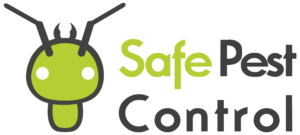Sterile Environment Pest Prevention Techniques: Effective Strategies for Clean Facilities
Creating a sterile environment is crucial for effective pest prevention. By maintaining cleanliness and employing targeted pest control methods, we can dramatically reduce the risk of infestations. Utilizing environment-friendly and sustainable techniques not only protects our areas but also ensures that we support ecological balance.
In this blog post, we will explore practical pest prevention techniques that anyone can apply. From sealing entry points to employing natural deterrents, there are numerous ways we can maintain a pest-free environment without relying on harsh chemicals. Our goal is to provide methods that are both effective and kind to the environment.
By understanding and implementing these techniques, we can successfully create and maintain sterile spaces. This approach not only safeguards our health but also promotes a sustainable way of living. Join us in discovering how we can achieve a pest-free environment through smart, eco-friendly practices.
Fundamentals of Pest Prevention
Effective pest prevention requires an in-depth understanding of pest biology and behavior as well as the implementation of integrated strategies across an entire area.
Understanding Pest Biology and Behavior
Recognizing the biology and behavior of pests is crucial in preventing infestations. Pests have specific life cycles, habitats, and survival mechanisms that we must understand for effective control. By pinpointing their breeding and feeding habits, we can target interventions more precisely.
Key elements to consider:
- Life Cycle: Knowing which stage of the life cycle the pest is most vulnerable.
- Habitat: Identifying where pests live and breed.
- Behavior: Understanding movement patterns and behaviors, such as feeding times.
Principles of Area-Wide Integrated Pest Management
Area-Wide Integrated Pest Management (AW-IPM) focuses on large-scale control strategies that are more effective than isolated efforts. This technique uses a combination of biological, physical, and chemical methods tailored to the specific ecosystem.
Core principles include:
- Coordination: Synchronizing efforts across different sites to maximize impact.
- Prevention: Prioritizing preventive measures to reduce pest populations before outbreaks occur.
- Sustainable Control: Emphasizing environmentally friendly controls, such as biological agents and habitat manipulation.
Implementing these principles ensures a cohesive approach to pest management that integrates well with the surrounding ecosystem. Click here to read more about medical waste management.
Sterile Insect Technique (SIT) and Related Methods
Sterile Insect Technique (SIT) involves releasing large numbers of sterilized male insects to reduce pest populations. This technique, combined with genetic sexing and mass-rearing, offers a comprehensive approach to managing pest issues without relying on chemical pesticides.
Irradiation and Insect Sterilization
We utilize irradiation to sterilize male insects, ensuring they cannot produce offspring. This is achieved through exposing insects to specific doses of ionizing radiation such as gamma rays or X-rays. The irradiation process targets reproductive cells, effectively sterilizing the insects without affecting their ability to compete for mates. This method significantly reduces pest populations over time, as the sterile males mate with females, resulting in no viable offspring.
Genetic Sexing and Transgenic Approaches
Genetic sexing techniques allow us to distinguish males from females at an early stage, making it easier to focus on sterilizing and releasing only males. Transgenic approaches involve modifying insect genes to carry specific markers or induce sterility. By using genetic sexing strains and transgenic insects, we can increase the efficiency and effectiveness of SIT. These methods ensure that only modified males are released into the environment, enhancing the impact on pest populations.
Mass-Rearing and Release of Sterile Insects
The success of SIT heavily relies on our capability to mass-rear and release large numbers of sterile insects. We maintain controlled environments to breed and rear insects in vast quantities. Once reared and sterilized, these insects are systematically released into target areas. Consistent releases are crucial to keep pest populations in check, making operational schedules and precise execution key to the strategy’s success.
Targeted Species for SIT Programs
Sterile Insect Technique (SIT) Programs specifically target several pest species that threaten agriculture and human health. These programs involve releasing sterilized insects to reduce wild populations effectively.
Management of Fly Populations
We focus heavily on flies due to their significant impact on crops and human health. Notable species include the Mediterranean fruit fly (Ceratitis capitata), tsetse flies (Glossina palpalis gambiensis), and mosquitoes (Aedes aegypti).
The Mediterranean fruit fly is a notorious pest that affects various fruits. Through SIT, we release sterilized flies, reducing population growth. The tsetse fly transmits sleeping sickness, so controlling its population helps to curtail this disease. For Aedes aegypti, known for spreading dengue fever and Zika virus, SIT helps curb occurrences of these diseases.
Control Methods for Moths
Moths pose a significant threat to stored products and crops. The codling moth (Cydia pomonella), pink bollworm (Pectinophora gossypiella), and false codling moth (Thaumatotibia leucotreta) are primary targets.
The codling moth primarily attacks apple orchards, creating substantial economic losses. Using SIT, we release sterilized moths to disrupt their breeding cycle. For the pink bollworm, a pest in cotton fields, SIT proves effective in reducing infestation rates. The false codling moth affects citrus fruits, and through SIT, we achieve better control, ensuring healthier harvests.
Implementing Pest Control Programs
Introducing effective pest control programs requires careful planning and the integration of suppression, eradication, and containment strategies through applied research.
Designing Strategic Options for SIT
When designing strategic options for Sterile Insect Technique (SIT), it is crucial to consider various management considerations. Key steps include pest population suppression, the introduction of sterile insects for eradication, and containment plans.
Utilizing supportive technologies can enhance the success of these initiatives. Technologies such as automated release systems and genetic engineering tools are essential for improving precision and efficiency.
Our focus should be on creating adaptable and responsive strategies that can be tailored to specific pest situations. Regular assessment and flexibility in approach are necessary to address diverse challenges effectively.
Evaluation, Quality Control, and Research
Evaluation and quality control are foundational to successful pest control programs. We must continuously monitor pest population levels and the efficacy of our interventions. This involves rigorous data collection and analysis to inform decision-making.
Quality control measures ensure that sterile insects meet stringent standards before release. Supportive technologies, such as radiation dosimetry and genetic markers, play a critical role in maintaining the integrity of SIT programs.
Our commitment to ongoing research enables us to refine and enhance pest control methods. Collaborative efforts between researchers and field teams foster innovation and the application of the latest scientific advancements in pest management.
Environmental and Economic Considerations
Sterile environment pest prevention techniques impact both the ecosystem and agricultural production, while also carrying significant economic ramifications. Our analysis will explore these dimensions.
Impact on Ecosystem and Agricultural Production
Sterile techniques are highly effective in controlling pest populations. By releasing sterilized insects into the environment, we reduce pest numbers without the use of harmful chemicals.
Absence of pesticides benefits non-target species, promoting biodiversity and ecosystem health. This approach can lead to more robust agricultural production, as crops are less damaged by pests.
It’s crucial to monitor the balance between reducing pests and maintaining a healthy ecosystem. Careful planning ensures that pest control measures do not disrupt the natural predation and prey relationships essential for environmental stability.
Economic Aspects of Pest Management
Sterile environment pest prevention typically has a higher initial cost compared to traditional methods. Despite this, it reduces long-term production costs by minimizing crop losses.
Our sector increasingly recognizes the economic importance of investing in sustainable approaches. By avoiding chemical pesticides, we reduce expenditures related to health issues and environmental cleanup.
Funding these programs might strain resources initially, but the operational savings from enhanced crop yields and reduced pest damage justify the investment. These sustainable methods not only safeguard the environment but also bolster the economic viability of agricultural practices.




